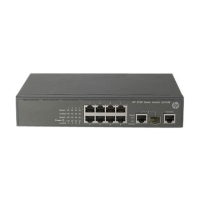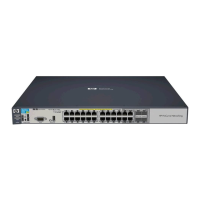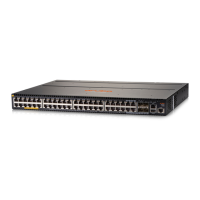48
Step Command Remarks
8. Specify the accounting
method for portal users.
accounting portal { local | none |
radius-scheme radius-scheme-name
[ local ] }
Optional.
The default accounting method
is used by default.
Tearing down user connections
Step Command Remarks
1. Enter system view. system-view N/A
2. Tear down AAA user
connections.
cut connection { access-type { dot1x |
mac-authentication | portal } | all | domain
isp-name | interface interface-type
interface-number | ip ip-address | mac
mac-address | ucibindex ucib-index | user-name
user-name | vlan vlan-id } [ slot slot-number ]
The command applies
only to LAN and
portal user
connections.
Configuring a NAS ID-VLAN binding
The access locations of users can be identified by their access VLANs. In application scenarios where
identifying the access locations of users is a must, configure NAS ID-VLAN bindings on the switch. Then,
when a user gets online, the switch obtains the NAS ID by the access VLAN of the user and sends the
NAS ID to the RADIUS server through the NAS-identifier attribute.
To configure a NAS ID-VLAN binding:
Ste
Command
Remarks
1. Enter system view.
system-view N/A
2. Create a NAS ID profile and
enter NAS ID profile view.
aaa nas-id profile profile-name
You can apply a NAS ID profile to
an interface enabled with portal.
See "Configuring portal
authentication."
3. Configure a NAS ID-VLAN
binding.
nas-id nas-identifier bind vlan
vlan-id
By default, no NAS ID-VLAN
binding exists.
Specifying the device ID used in stateful failover
mode
Two switches working in stateful failover mode for portal services are uniquely identified by their device
IDs. A device ID can only be 1 or 2. For more information about the stateful failover mode for portal
services, see "Configuring portal authentication."
Follow these guidelines when you specify the device ID used in stateful failover mode:
